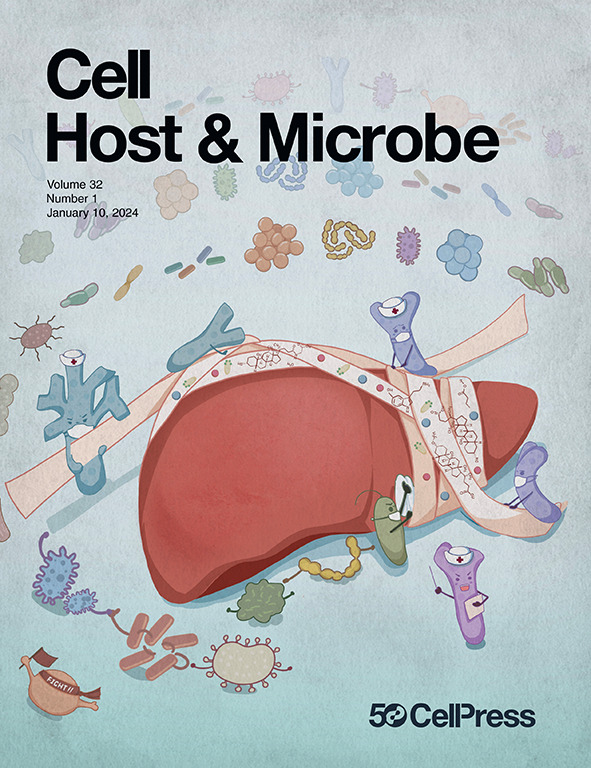The prototypic crAssphage is a linear phage-plasmid
IF 18.7
1区 医学
Q1 MICROBIOLOGY
引用次数: 0
Abstract
The prototypic crAssphage (Carjivirus communis) is an abundant, prevalent, and persistent human gut bacteriophage, yet it remains uncultured and its lifestyle uncharacterized. C. communis does not readily plaque, suggesting a largely non-lytic lifestyle. Here, we find that C. communis is a linear phage-plasmid that stably persists extrachromosomally within its host. Plasmid and phage-related genes are transcribed, and multiple putative replication origins may initiate replication for multiple lifestyles and genome conformations, including both circular and linear formations. Leveraging these findings, we use a plaque-free culturing approach to measure C. communis replication on prevalent gut bacteria, notably Phocaeicola vulgatus, P. dorei, and Bacteroides stercoris, revealing a broad host range. C. communis persists without causing major cell lysis events or integrating into host chromosomes. Taken together, C. communis’ ability to switch between phage and plasmid lifestyles within a wide range of hosts may contribute to its widespread presence in human gut microbiomes.

原噬菌体是一种线性噬菌体质粒
原型噬菌体(Carjivirus communis)是一种丰富、普遍和持久的人类肠道噬菌体,但它仍未被培养,其生活方式也未被表征。C. communis不容易形成斑块,这表明一种基本上不溶性的生活方式。在这里,我们发现C. communis是一种线性噬菌体质粒,稳定地存在于其宿主的染色体外。质粒和噬菌体相关基因被转录,多个假定的复制起源可能启动多种生活方式和基因组构象的复制,包括圆形和线性构象。利用这些发现,我们使用无斑块培养方法来测量常见肠道细菌(特别是Phocaeicola vulgatus, P. dorei和Bacteroides stercoris)上的communis复制,揭示了广泛的宿主范围。C. communis不引起主要的细胞裂解事件或整合到宿主染色体中而持续存在。综上所述,C. communis在广泛宿主体内在噬菌体和质粒生活方式之间切换的能力可能有助于其在人类肠道微生物群中的广泛存在。
本文章由计算机程序翻译,如有差异,请以英文原文为准。
求助全文
约1分钟内获得全文
求助全文
来源期刊

Cell host & microbe
生物-微生物学
CiteScore
45.10
自引率
1.70%
发文量
201
审稿时长
4-8 weeks
期刊介绍:
Cell Host & Microbe is a scientific journal that was launched in March 2007. The journal aims to provide a platform for scientists to exchange ideas and concepts related to the study of microbes and their interaction with host organisms at a molecular, cellular, and immune level. It publishes novel findings on a wide range of microorganisms including bacteria, fungi, parasites, and viruses. The journal focuses on the interface between the microbe and its host, whether the host is a vertebrate, invertebrate, or plant, and whether the microbe is pathogenic, non-pathogenic, or commensal. The integrated study of microbes and their interactions with each other, their host, and the cellular environment they inhabit is a unifying theme of the journal. The published work in Cell Host & Microbe is expected to be of exceptional significance within its field and also of interest to researchers in other areas. In addition to primary research articles, the journal features expert analysis, commentary, and reviews on current topics of interest in the field.
 求助内容:
求助内容: 应助结果提醒方式:
应助结果提醒方式:


